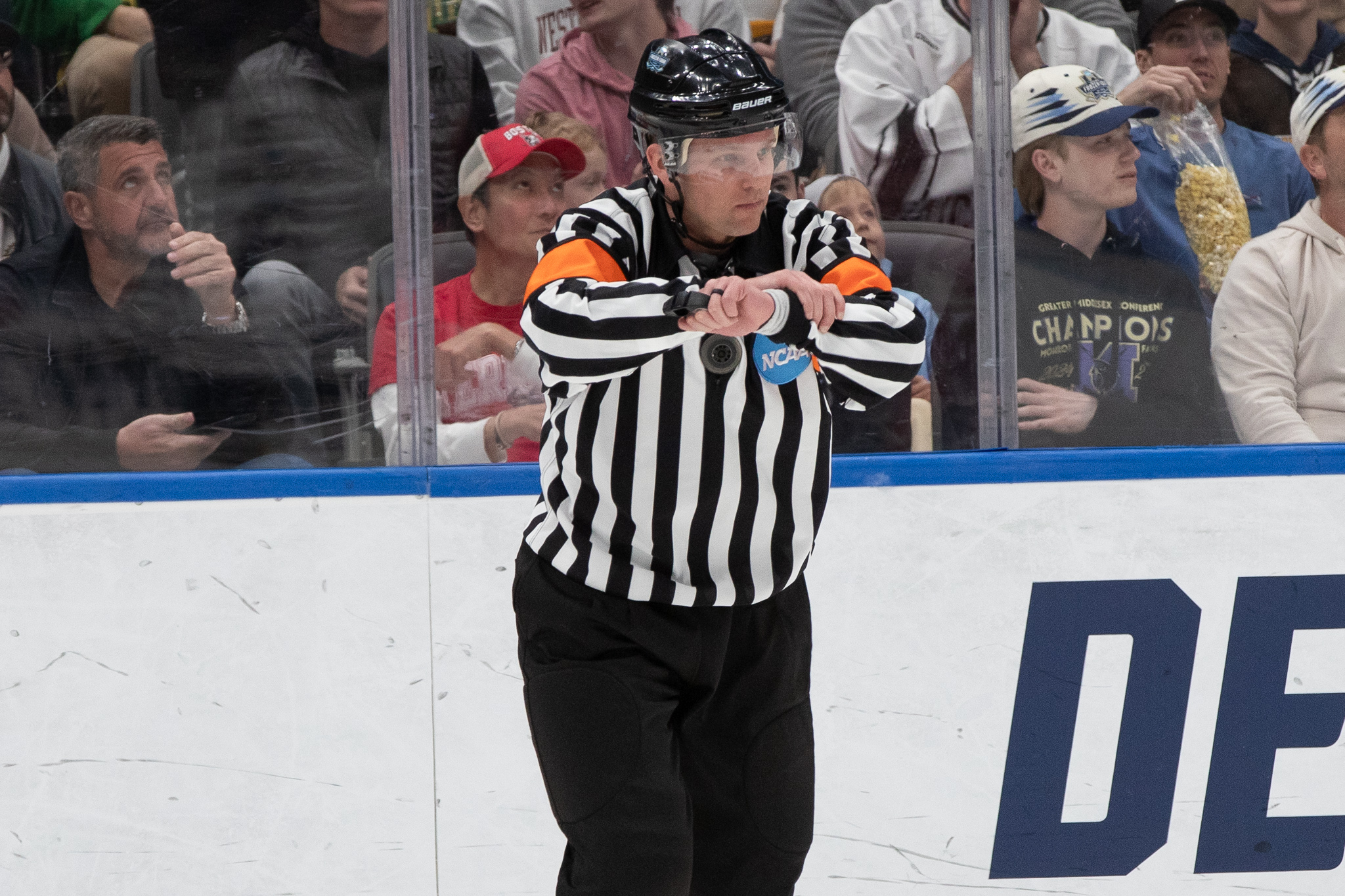
A common frustration has existed for years among college hockey administrators.
Decisions specifically impacting college hockey made by those in college hockey often had to go through a process involving approval from officials with little to no knowledge of or connection to college hockey.
That’s how the NCAA’s committee structure has worked. Want to change a hockey playing rule? Send it up to an NCAA-wide rules oversight committee. Want to allow teams to start the season on a Friday instead of a Saturday? The Division I Council will consider it at some point.
Some of those extra pieces of bureaucracy are going away, and college hockey administrators are looking forward to a more streamlined approach.
The NCAA is going through a change in Division I governance structure that will give individual sports the final say on many elements that used to need approval from oversight committees.
In hockey, it means autonomy to control playing rules, season dates, recruiting rules and administration of the NCAA tournament. Final approval of the change happened in August, and college hockey administrators said there are pieces of the implementation that need to be worked out.
But they’re looking forward to a direct path for college hockey to control college hockey.
“You were waiting many months — years at times — for decisions that were really a no-brainer at the smaller level of the sport,” NCHC commissioner Heather Weems said of the old governance model. “They were likely going to get passed as a formality but it took so long to get there because there wasn’t a pathway and there was so much bureaucracy in the way.”
Here are some things to know about the changes that are taking place.
Sport oversight committees take on bigger roles
The NCAA still has a board of directors at the top of the governance pyramid and a group called the Administrative Committee that will have oversight of common areas of college sports policy like financial aid, revenue sharing and ethical conduct.
Sport oversight committees for sports that have a Division I championship — that distinction becomes important in women’s hockey — were introduced as a path to more direct governance of things like coaching staff limits and duties, recruiting rules and how many games a team can play.
College hockey commissioners formally asked the NCAA in early 2024 for a sport oversight committee like the ones that have been in place for years in football, men’s basketball and women’s basketball. The NCAA said that wasn’t a direction it was looking to take, Weems said, but things ended up going that way anyway in the Division I governance updates.
“In hockey, we’re going to have people with hockey backgrounds more involved in the decision-making process,” said Forrest Karr, the Minnesota Duluth athletic director who’s also executive director of the American Hockey Coaches Association. “So I think that’s a good thing for the sport moving forward.”
Multiple rule books could be in the future
As it’s written now, the NCAA hockey rule book covers all divisions and both men and women. That could be changing in one of the most visible applications of the governance change.

“There’s always been an interest from some of the Division I men’s coaches to have their own rule book,” said Hockey East commissioner Steve Metcalf, a former chair of the NCAA Division I Men’s Ice Hockey Committee when he was athletic director at New Hampshire. “And then I’d say there’s probably an increasing interest from the Division I women’s coaches to have their own rule book. That, on the women’s side, has been driven a little bit by what the PWHL is doing.”
Historically, Division I men’s coaches have leaned toward wanting to align with NHL rules, including in overtime format. There’s now a path for Division I men’s hockey to have one overtime system and Division III and women’s hockey to choose different ways of deciding — or not deciding — tie games.
How much video replay technology should play a role in games also could be a concept where the different parts of college hockey won’t align in the future.
More people are involved in the new hockey oversight committee
The newly created Division I Men’s Ice Hockey Oversight Committee is at the top of the chart for men’s hockey administration. It includes 11 people:
• A representative of each of the six conferences, as was the case with the old Division I Men’s Ice Hockey Committee. Tim Troville, the senior associate athletic director at Harvard, is still the chair. The others returning to the committee are Minnesota Duluth coach Scott Sandelin, Boston College athletic director Blake James, Michigan sport administrator Josh Richelew and Mercyhurst coach Rick Gotkin. Minnesota State coach Luke Strand took over the CCHA spot from now-retired coach Bob Daniels of Ferris State.
• A student-athlete representative to be determined.
• A faculty athletics representative (currently Chris Melde of Michigan State).
• The national coordinator of officials (Frank Cole).
• The rules editor (Jeff Fulton).
• A representative of the coaches association (Karr).
The faculty athletics representative, coordinator of officials, rules editor and coaches association rep are nonvoting positions.
There also are two subcommittees in men’s hockey, one on playing rules and one on the championship.
The women’s side looks different than the men’s side
It’s important to know how men’s hockey differs from women’s hockey in the new governance model. The top level of NCAA women’s hockey plays under a National Collegiate championship format, meaning teams from multiple divisions are eligible. The top level of NCAA men’s hockey is a Division I championship even though there are schools that compete primarily at the Division II and Division III levels involved.
The new governance model was a Division I application, so only sports with Division I championships are covered. Changes to the National Collegiate model are being studied by the NCAA, Karr said, and results are expected in 2027.
The National Collegiate Women’s Ice Hockey Committee setup is unchanged: It’s still five people — one representing each conference — with three administrators and two coaches. But because of the separation of rules administration, there will be a playing rules subcommittee added for National Collegiate women’s hockey.
Men’s hockey won’t have weighted voting
One of the elements of the Division I governance changes gave the vote of autonomy conferences a heavier weight. In sports that have larger school sponsorship than hockey does, that gives the Big Ten, SEC, ACC and Big 12 more of a say in decisions.
But because the Big Ten is the only Power 4 conference that sponsors men’s hockey, the weighted voting isn’t being used in the sport.
Read more on the new governance structure here.
The structure of the Division I Men’s Ice Hockey Oversight Committee technically includes a callout only for the Big Ten but it doesn’t give that conference more authority. The committee roster includes one representative from the Big Ten, three from the highest ranked nonautonomy conferences (also known as success seats; these are the NCHC, Hockey East and ECAC Hockey) and two from the remaining at-large conferences (Atlantic Hockey and CCHA). The committee format gives every conference a spot, however, so the specifics are moot.


